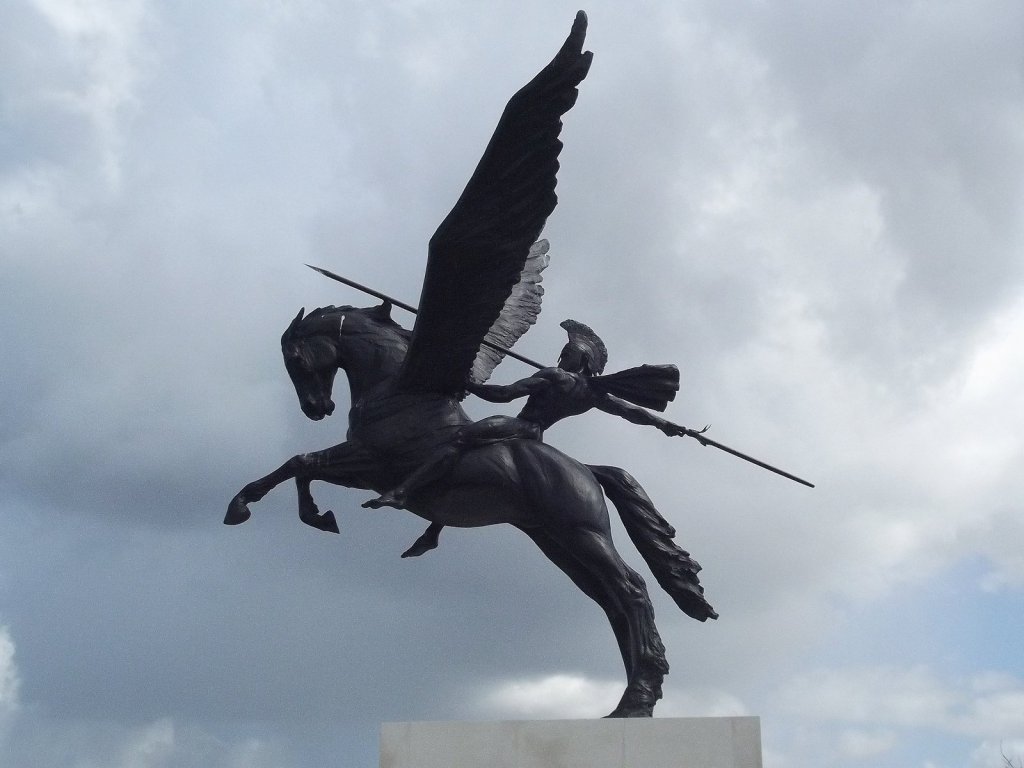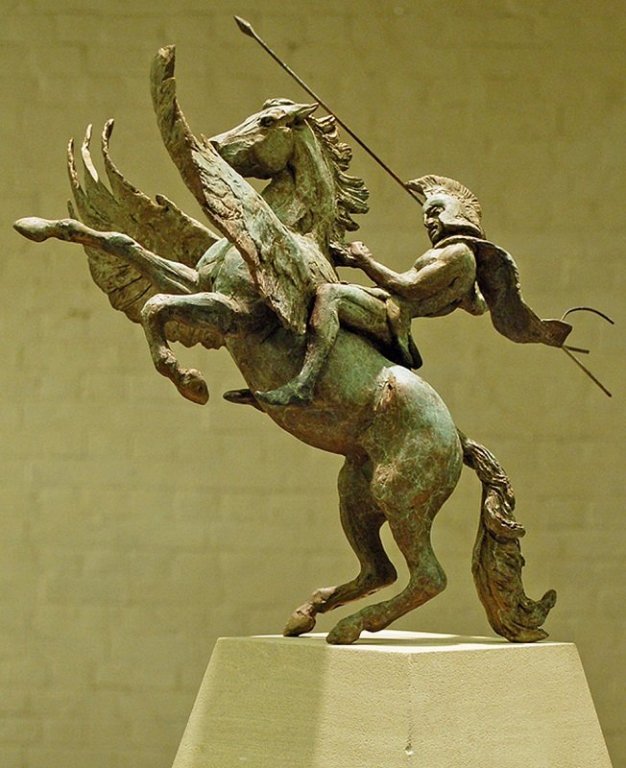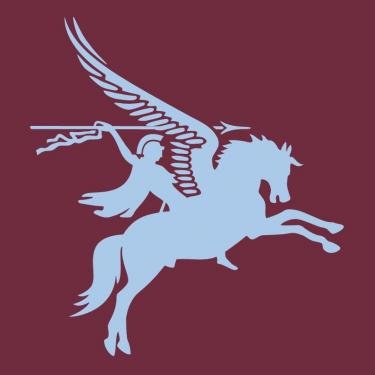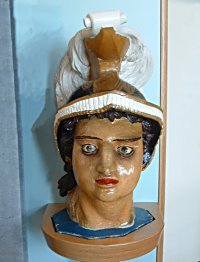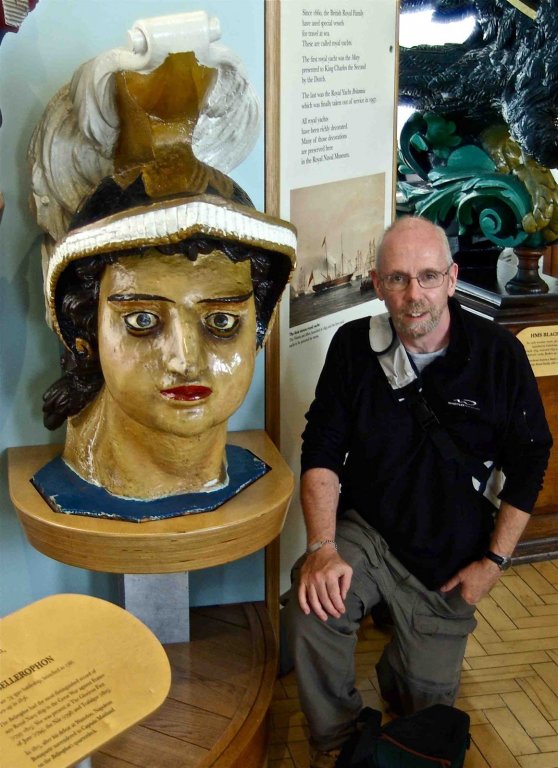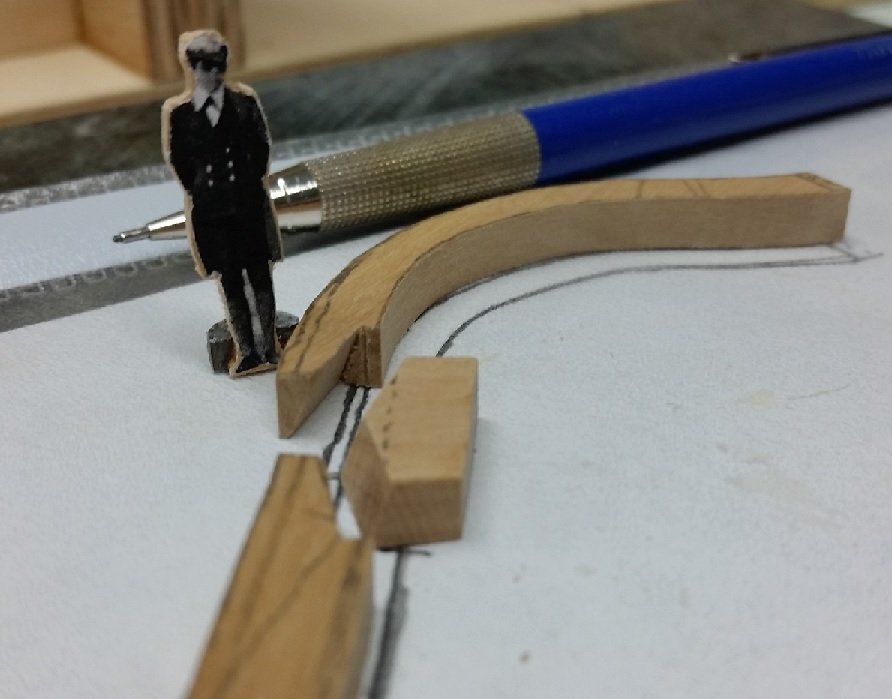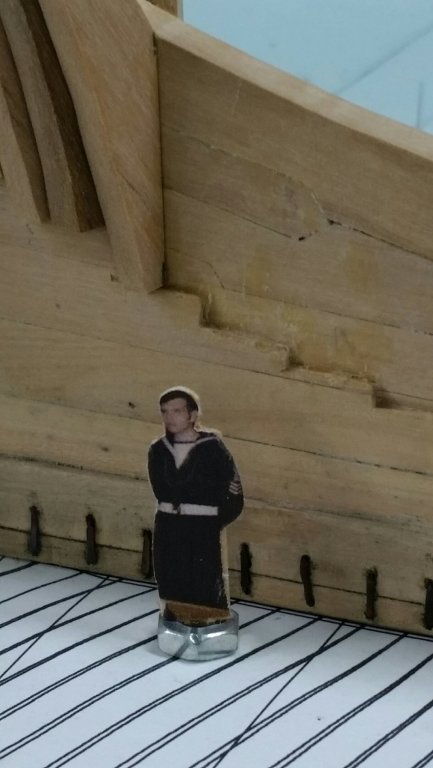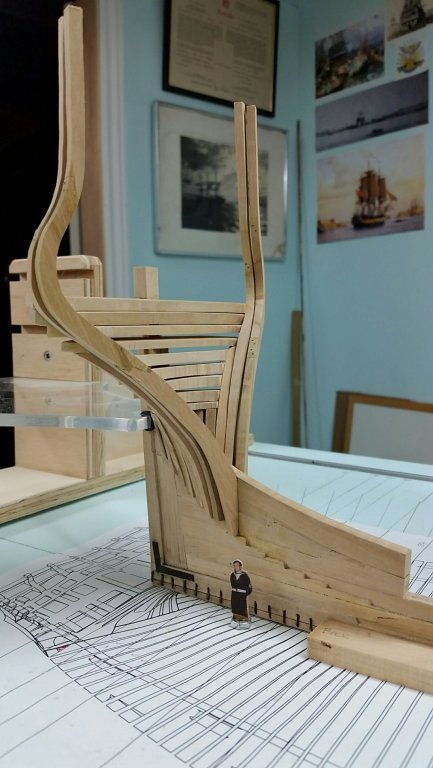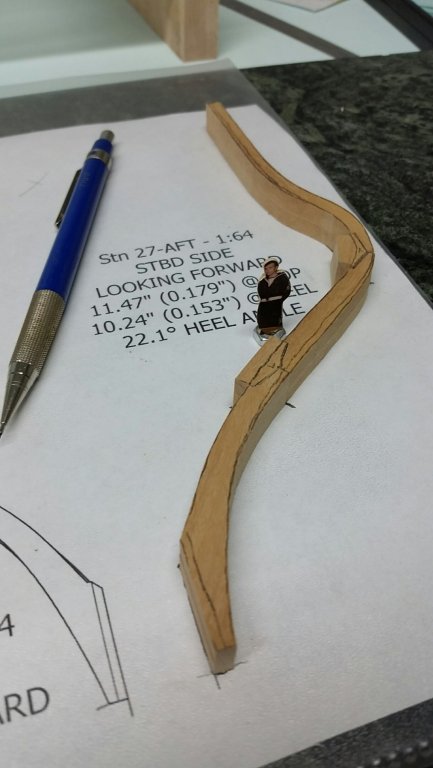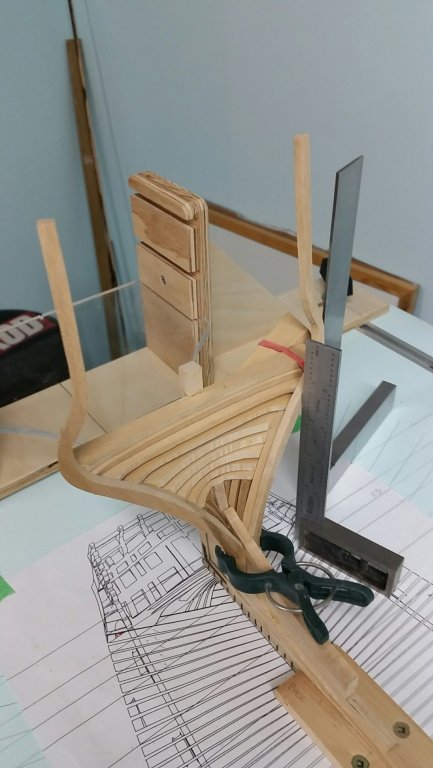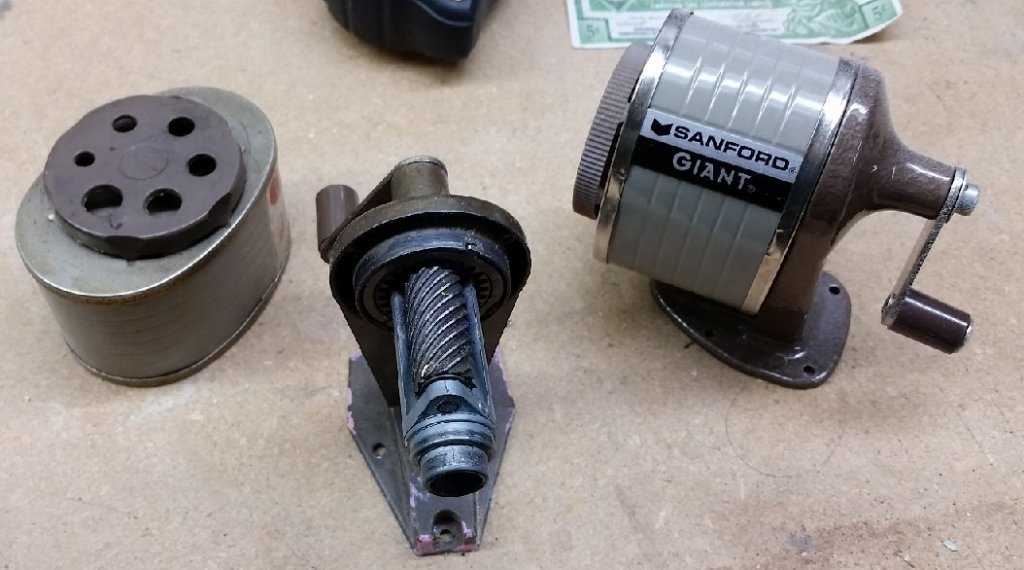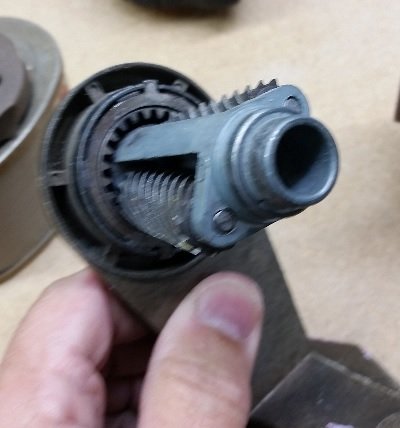-
Posts
2,859 -
Joined
-
Last visited
Content Type
Profiles
Forums
Gallery
Events
Everything posted by AON
-
This is what I've seen as sculptures/statues/stamp that might represent what it looked like. You can understand why I feel it was crowded around all the standing and running rigging at the bow.
- 28 replies
-
- bellerophon
- 74 gun
-
(and 1 more)
Tagged with:
-
Good evening Tony, I have been researching the figurehead of the first Bellerophon as launched. All I can find is the following: source - http://figureheads.ukmcs.org.uk/?p=1715 "Before it was damaged the figurehead represented Bellerophon as a nude figure draped in a red cloak riding Pegasus, his right arm raised, holding a javelin. The horse’s wings were spread. All that remains is the helmeted head. The figurehead would have been painted white during its time in service. In 1814 the Navy Board approved more use of gilding and colours for figurehead decoration." The accident was on the 18th of July 1793, SW of the Scilly Isles where she collided with HMS Majestic in gale winds. Have you seen anything while you were researching. I see you have the representation of (I believe) the replacement figurehead. With all the rigging it is a busy area to have a full figure with a spear, horse and wings! bellerophon figurehead original state library victori australia image H99.220(slash)1026.tif
- 28 replies
-
- bellerophon
- 74 gun
-
(and 1 more)
Tagged with:
-
Good morning Bob, I have just spent two days going through your build log yet one more time. Thank you very much for all the pics, build comments, details. I will be referring to your build over and over (along with my library) and over as I progress on my ship. I haven't gotten very far as work has its demands so I crawl along... but I retire in one year and will then have tons of time. You've done a fantastic job and you are sooooo close to done. Alan
-
I am back. Having successfully bevelled a futtock chock joint. What a painful process it was for me to accomplish. I pray I've got it going the proper way. If not S/Lt Martin (she has since been promoted to Admiral) will have my hide! Feels like I've a quadrillion to go... so many opportunities to improve
-
I PM'd you some info. look at page 35 Wing Transom Knees: WING TRANSOM KNEES(130) ---- To have two wing tranfom (transom) knees fided (sided) 12 inches, the fore and aft to be 16 feet 0 inches long; the athwartfhips (athwarthships) to be 6 feet 0 inches long, to fcarph (scarph) with hook and butt(78, 81, 104) upon the upper strake of spirkitting(131) and bolted with 5 bolts 1-1/4 inches diameter in the thwartfhips (thwartships) arm, and with 8 bolts in the fore and aft arm, and with 2 bolts of 7/8 of an inch in the lip of the scarph.
-
I noticed there is a problem. I was staring at it but couldn't see the forest (it) for the trees (frames?). After studying TFFM Vol 1 and 3 this weekend it became obvious. I hadn't been chamfering my chocks/joints in the cant frames to account for the angle and sanding. Too much of the chock was exposed and would be sanded away when fairing the inside surfaces of the frames. In volume 1 of TFFM David simplifies the joints (square end butt joint) in the cant frames. In volume 3 of TFFM Greg simplifies the joint (half step simulating the chock but cut back to the proper chamfered depth) in the cant frames. So what I've put back on I have yet again taken off. I believe I'll get it this next (last?) time! "Seems there is always time to do it over".
-
So let me introduce myself CPO and Bosun (Bos'n or Boatswain), 141 Royal Canadian Sea Cadet Corps Bellerophon of Welland, Ontario (1972). I shrunk my self to 5'-6" from my present 5'-10-1/2" (glued to a thin piece of wood and that glued to a tiny hex nut to keep me upright) I'll be adding my father (Able Seaman RCNVR 1939-1945) and my grandfather (Able Seaman NRNR 1914-1918) to the crew. If I find one of my wife (Navy League Wrenette Corps Patrician of Welland) in uniform she will be signed aboard also... women allowed. The only criteria for family to join is they must be in naval uniform. I won't likely post again until I get back to at least where I was before I tore frames off. take care till then.
-
As of late I've been using a 0.5mm (0.02") mechanical pencil... it doesn't require sharpening just refilling. I should however erase the pencil tracing (transferring the pattern to the wood with carbon paper) on the paper pattern when I assemble the wood pieces over it.! As an aside, I have noticed some people inserting scale cut out cartoon people into their builds to effectively demonstrate the scale. I will be inserting a much younger me into my next build stage photo. So if you find yourself wondering... yes it is me, not some total stranger lurking about my ship.
-
Thank you for the message. You should be aware that I haven't any great skill level and I appreciate I've jumped into the deep end of this pool but find this forum to be my life jacket. Making some progress. I find the wood glue does not adhere to the plastic sheet (picture below). It did to the glass, so this is quite a bonus! I have (as you'll see below, one set of full frames installed, I installed one half of the next set this morning and hope to get the other half up tonight. I've cut out the next set and need to fine tune the chocks before I glue the pieces together.
-
That is why I put a width (x) and a height (y) dimension on the one frame (of a dozen) on the large sheet. I put my scale against the print and verify it is correct from the commercial printer before I pay them. I was taught (in the engineering office) to never scale off a print. Back in the day it was because "blue prints" stretched due to the wetness of the process. We've tested dry prints and depending on the humidity in the paper and the heat of the machine the paper distorts so we still do not measure off a print. Then there is the problem with margins or borders. I believe two dimensions or scales (X+Y directions) need to on the print to verify the scale of the printed paper. If others (Druxey) never had this problem... then it must be me (?)
-
My (large sheet) prints were made commercially. I could set every individual frame up on an 8-1/2 x 11 sheet. I will have issues with my printer printing to scale... it seems to have a mind of it's own. If I add a dimension and put a ruler to it after printed it is rarely what I asked for. I'd have to play with it. When I had the large sheets printed commercially I added X and Y dimensions on the print of one frame on each so I could double check them and they were all perfect.
-
I use a small pointed applicator... the left over after the brush on a micro-brush is wasted. it gives it a new life. (reuse, recycle) You've seen the E+ sheet size (larger than 24" x 36") hanging in the corner of my room. I cut the pattern out of it. I do not print a small A or B size sheet (letter or ledger). It could get expensive if my templates are ruined. At present I have two full sets and have only been using/reusing the one. The other is untouched.
-
Summer is over and time to get back to my build. I had added a few more frames but I had a number of issues... 1. My top deadwood piece was forgotten and when I put it on I hadn't made it to the chiselled out thickness so I've been notching my frames to fit... I compromised. 2. My stem/stern posts were not held snuggly and as I added frames the assembly shifted. I added felt pads to snug things up last week and noticed my frames were outboard of proper alignment by as much as 3/16 inches = 12" to scale... both sides! 3. I've been assembling my frames on a pane of glass with my template below and last week someone mentioned distortion though the glass. I've torn all frames out back to the transom and I've removed two braces below the transom pieces. I've chiselled the top deadwood to proper thickness. The posts are held snuggly. I've installed all braces and will be starting over making new frames. I've retired the glass pane and will try slipping my template into one of those transparent plastic page protectors and build on top of that. I'll post again when I get back to where I was. Hope everyone this side of the line had a wonderful summer and got outside.
-
Derek, I believe that after a full day at the office errors in the shop are unavoidable. Going slow and being extra diligent hasn't worked for me. You need a table with adjustable height. It has been a god send for me. I also find my tilting model section very useful in reaching inside of and under the outside of the aft bent frames. You'll have to drop by one weekend to see what I'm talking about. That is an invitation to see, chat, have a coffee, tea or something with a bit more spirit! Bring the admiral along... mine will be here. You missed an opportunity yesterday afternoon at the Marine Modellers of Niagara meeting... it was at my home. You should have developed a cough and left work early. Alan
-
I acquired two old pencil sharpeners and while looking them over I suddenly saw a ropewalk conversion project in my future. Seems all it needs is an addition to the hub end to connect the three lines. This will not be for some time but thought I'd share the idea and would appreciate any comments. pencil_sharpener_1.mp4
-
would you consider taking orders to make cabinets for others? beautiful job.
- 968 replies
-
- hahn
- oliver cromwell
-
(and 1 more)
Tagged with:
-
I purchased a copy of this book in 1972 when I was on working at the boatshed at HMCS Quadra. I believe it was $40 which was a lot of money back then. We used it that summer to create ornamental paddles with parachute cord and a slew of fancy knots. I am sad to say someone valued it more than I (a few years later) as it "walked away".
-
no need for the additional photo of the v-notch as I found a good one on Page 80 post dated July 22 thank you Alan
- 3,618 replies
-
- young america
- clipper
-
(and 1 more)
Tagged with:
About us
Modelshipworld - Advancing Ship Modeling through Research
SSL Secured
Your security is important for us so this Website is SSL-Secured
NRG Mailing Address
Nautical Research Guild
237 South Lincoln Street
Westmont IL, 60559-1917
Model Ship World ® and the MSW logo are Registered Trademarks, and belong to the Nautical Research Guild (United States Patent and Trademark Office: No. 6,929,264 & No. 6,929,274, registered Dec. 20, 2022)
Helpful Links
About the NRG
If you enjoy building ship models that are historically accurate as well as beautiful, then The Nautical Research Guild (NRG) is just right for you.
The Guild is a non-profit educational organization whose mission is to “Advance Ship Modeling Through Research”. We provide support to our members in their efforts to raise the quality of their model ships.
The Nautical Research Guild has published our world-renowned quarterly magazine, The Nautical Research Journal, since 1955. The pages of the Journal are full of articles by accomplished ship modelers who show you how they create those exquisite details on their models, and by maritime historians who show you the correct details to build. The Journal is available in both print and digital editions. Go to the NRG web site (www.thenrg.org) to download a complimentary digital copy of the Journal. The NRG also publishes plan sets, books and compilations of back issues of the Journal and the former Ships in Scale and Model Ship Builder magazines.



